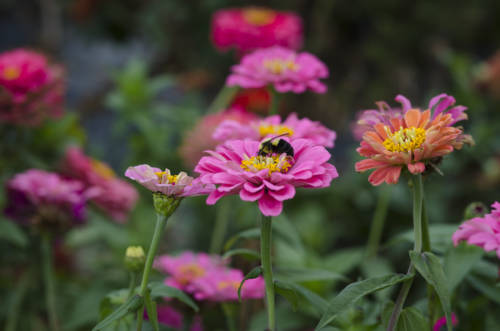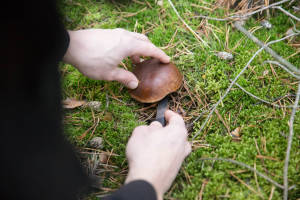
A Short Primer On Wildlife Etiquette
With Fall arriving, time spent outside takes on a certain gravity– the days of aimless summer afternoons are gone, replaced by autumn’s industrious impulse towards labor and harvest. Wildlife too seems to sense this change; this transitory period is often a time when wildlife is liable to be more visible, as butterflies and birds undertake vast migrations while bears anticipate hibernation. In honor of the season, we put together a basic wildlife etiquette guide that addresses how you can support your local wildlife, whether you’re embarking on an outdoor adventure or simply gardening in your own backyard.
What You Can and Can’t Gather From Parks
Most people know not to pick flowers from state parks and have heard some iteration of “If everyone who visited picked a flower…” but what about more innocuous items like pinecones and birds nests? Collecting the former is a no-no in state parks and the latter is an absolute No everywhere else (and has been for a long time). According to the Migratory Bird Treaty Act of 1918, removal of any bird-related item is illegal (that includes feathers, eggs, and nests). It’s especially important to not remove nests– even if they look empty– as many birds return to them after migration.
Some small-scale foraging (like for mushrooms) is allowed in state parks, but there are site-specific exceptions in every state (for example, you can’t take seaweed from Alaskan state parks). National parks prohibit the removal of rocks and minerals, but some state forests allow small scale collection. Be sure to check with your local ranger when visiting, and when it doubt, just take away the memory.
On the Road
Most people know that tossing your plastic and paper out the window is a no-go. But what about biodegradable items like apple cores and banana peels? “In the case of raptors, the garbage attracts rodents, and then the bird goes after this prey and gets hit by a car,” Renata Schneider, wildlife rehabilitator, warned the Humane Society of the United States. Scavengers like foxes and raccoons are likewise attracted by biodegradable roadside refuse, and are consequently lured into danger, so best to hang on to your food scraps until you can appropriately dispose of them. Minimizing your noise when you’re out hiking (not playing music and definitely not imitating wildlife calls) will also help ensure that wildlife doesn’t become disoriented, and can go about their day unperturbed.
At Home
As the days become shorter, we tend to rely more and more on indoor lights– but these lights can often confuse birds and cause them to collide with windows. While most people do turn off lights they’re not using anyways (hello electrical bill!), it’s worth remembering the habit as Fall encroaches. When windows are left open and lights are on, birds can sometimes accidentally fly into your home– a traumatic experience for all parties involved. If a bird gets into your home, don’t use a broom to shoo them out, as this can often cause damage to their fragile bones (even if it doesn’t seem like that hard a blow to you). Instead, isolate felled birds in one room, with only one window or door to the outside as an opening, and use a sheet to steer them in the right direction.
In Your Garden
Put down the rake! While there’s impulse to keep your garden neat and tidy– especially in Fall when things can start to pile up– leaving small heaps of leaves and other organic detritus is an easy (and essentially effortless) way to encourage your native ecosystem’s health. Brush piles create microhabitats for insects, which in turn provide sustenance for larger organisms like birds, ensuring that your local creatures survive the winter comfortably.





































